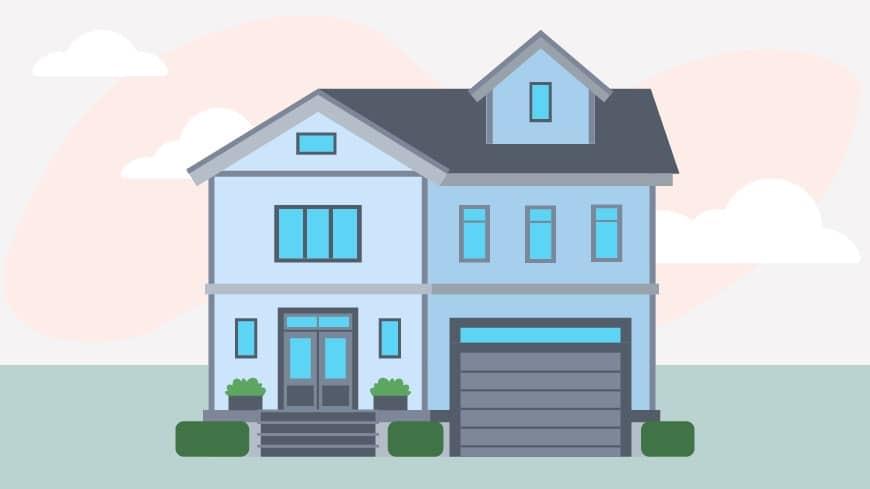How can I lower my mortgage payment?

If you’re currently struggling with making your mortgage payments every month, you may want to know that you are not alone. According to a recent article from Fox Business found on Rate News, the average American household spends 24% of their monthly income on mortgage payments.
So it’s safe to say, many homeowners are looking for ways they could lower their monthly mortgage payments.
The good news is there are several effective strategies to reduce those payments and ease your financial burden.
In this guide, we will explore how you could potentially lower mortgage payment and provide you with next steps to help you achieve your financial goals.
For personalized mortgage solutions, complete our Digital Mortgage application to get expert advice on the mortgage options we may have for you!
What Are the Ways to Lower My Mortgage Payment?
If you’re looking to make your mortgage a bit more affordable, there are options available that may help. Let’s review a few effective tips for how you could reduce your mortgage payment.
Get Rid of Private Mortgage Insurance
If you made less than a 20% down payment on a conventional loan or took out an FHA loan, you're likely paying for mortgage insurance, which can significantly increase your monthly mortgage payment.
Depending on your down payment and your credit score, these insurance premiums could add up to hundreds of dollars each month. Fortunately, there are ways to eliminate or reduce this cost:
Refinance to Get Rid of Mortgage Insurance
Here are a few strategies to consider when looking to have PMI removed from a mortgage:
- Refinance Your Conventional Mortgage: If home values in your area have increased and you have built up equity in your home, refinancing your conventional mortgage can help you remove or lower your private mortgage insurance (PMI) premiums.
If you have at least 20% equity, you won't need to pay PMI at all. Even if you don't have 20% equity yet, your PMI premium will decrease based on the amount of equity you have built up since purchasing your home. - Refinance an FHA Loan to a Conventional Mortgage: For those with an FHA loan, the most effective way to eliminate mortgage insurance is to refinance into a conventional loan. However, it's essential to check your credit scores first, as conventional loans generally require higher credit scores than FHA loans.
Once refinanced, if you have at least 20% equity in your home, you won't need to pay for PMI. This option is particularly beneficial if you put down less than 10% when you initially purchased your home and are required to pay MIP for the life of the loan. - Pay Down Your Principal: If you have some extra cash, consider using it to pay down your mortgage principal. By reducing your loan balance to 80% of your home's value, you can avoid PMI altogether on a conventional loan. This can be a strategic move if you're close to the 20% equity threshold.
Can I Cancel PMI Without Refinancing?
You don't always need to refinance to get rid of PMI. Here’s how to get rid of PMI once you've reached 20% equity in your home:
- Request an Appraisal: If your home has increased in value significantly since you purchased it, you might qualify for PMI removal based on the new appraised value. Your lender will likely require an appraisal to verify the current value of your home.
- Regular Payment Schedule: If you've reached 20% equity through your regular payment schedule, without making any extra payments, your lender typically may not require an appraisal. Also, lenders are required to automatically cancel PMI once you reach 22% equity based on your standard payment schedule.
Extend Your Mortgage Term
A shorter mortgage term, like a 15-year loan, allows you to pay off your mortgage faster, but the higher monthly payments can strain your budget.
Refinancing to a 30-year mortgage can provide significant relief by lowering your monthly payments. However, it's important to understand that extending your loan term will increase the overall interest cost since more of your early payments will go toward interest rather than principal.
While this means you'll pay more in total interest, the immediate reduction in your monthly payment might be worth it if your primary goal is budget relief.
A mortgage refinancing calculator can help you weigh the benefits of lower monthly payments against the higher total interest costs.
Adjust to a Different Type of Mortgage
Refinancing involves replacing your current mortgage with a new one, ideally at a lower rate. There are various refinance options available:
- Conventional Rate-and-Term Refinance: This type of refinance, also known as a “limited cash-out refinance,” involves taking out a new loan to pay off your current mortgage at a better interest rate. While this can reduce your monthly payments, be mindful that if you roll closing costs into the loan, your monthly payments could be slightly higher.
- FHA Streamline Refinance: If you have an FHA loan, you can opt for an FHA streamline refinance, which allows you to refinance without the need for income documentation or a home appraisal. This can simplify the process and reduce costs, although you may need to budget for closing costs as they cannot be rolled into the loan.
- VA Interest Rate Reduction Refinance Loan (IRRRL): For eligible military borrowers with a VA loan, the IRRRL program allows refinancing without a home appraisal or income documentation. You can add closing costs to the loan, but you must break even on these costs within 36 months.
- USDA Streamline Assist Refinance: If you have a USDA loan, this option allows refinancing without a credit review, income verification, or appraisal. To qualify, you must have made your last 12 payments on time and save at least $50 per month from the refinance.
If you initially bought your home when rates were high and they have since fallen, refinancing can potentially lower your monthly payments.
Refinancing isn’t free and typically involves closing costs. It's essential to determine whether the interest savings will outweigh these expenses. A good rule of thumb is to consider refinancing if you can reduce your interest rate by at least 1%.
If you have an adjustable-rate mortgage (ARM), refinancing to a fixed-rate mortgage can offer stability by locking in a consistent rate. While ARMs may start with lower rates, they can increase over time, leading to higher payments. A fixed-rate mortgage helps solve for this uncertainty, providing predictable monthly payments.
Shop Around for Lower Homeowners Insurance
Homeowners insurance is a crucial part of protecting your property against loss or damage from natural disasters, fire, burglary, and other catastrophes. It's also a requirement from lenders to safeguard their investment in your home.
With Rate Insurance, you can skip the hassle of shopping around for insurance and get free home insurance quotes from over 100 top carriers. All you need to do is provide your information, review your quotes, and get insured. It’s that easy!
It’s important to shop around for different insurance carriers due to the following reasons:
- Annual Premium Increases: It's not uncommon for homeowners insurance premiums to increase each year. This can be due to a variety of factors, including a rise in the number of claims filed in your area or broader economic factors affecting the insurance industry. Shopping around for different providers allows you to potentially find a better rate and keep your insurance costs in check.
- Competitive Market: The homeowners insurance market is highly competitive, with hundreds of companies vying for your business. This competition can work to your advantage as insurers may offer better rates or more comprehensive coverage to attract new customers.
- Cost Savings Without Sacrificing Coverage: By comparing quotes from different insurers, you might be able to lower your insurance bill without sacrificing the quality of your coverage. It's important to ensure that any new policy you consider offers adequate protection to rebuild or repair your property in case of significant damage.
Steps to Shop for Affordable Homeowners Insurance:
- Evaluate Your Current Coverage: Start by reviewing your current homeowners insurance policy. Understand the extent of your coverage and any limitations or exclusions. This will help you compare new quotes accurately.
- Gather Multiple Quotes: Contact multiple insurance companies to get rate quotes for similar coverage. You can use Rate Insurance to streamline this process. To get comparable quotes, make sure to provide the same information to each insurer.
- Check Coverage Limits: When comparing quotes, ensure that each policy provides enough coverage to rebuild or repair your property if it's heavily damaged or destroyed. Standard policies may have limitations, so it's crucial to understand what is and isn't covered.
- Consider Customer Service and Reputation: While cost is important, it’s also essential to consider the customer service and reputation of the insurance companies you're evaluating. Look for reviews and ratings to ensure that the company is reliable and responsive in handling claims. Rate Insurance has a 97% customer satisfaction rate, making this process easier. Rate’s Client Satisfaction Surveys (Averaged 2023)
- Look for Discounts: Many insurers offer discounts that can reduce your premium. These may include bundling your homeowners insurance with other policies like auto insurance, installing security systems, or having a claims-free history. Ask each insurer about available discounts.
If you find a better rate with adequate coverage, switching insurance providers is usually straightforward. Contact your current insurer to inform them of your decision and confirm any cancellation policies.
Make sure your new policy starts before the old one ends to avoid any lapse in coverage.
Apply to Adjust Property Taxes
Property taxes are a significant part of your monthly mortgage payment, especially if your loan includes an escrow account. If you suspect that your property tax assessment is inaccurate, you can appeal the tax assessment with your local, county, or regional tax board.
Here's how you can go about it:
- Check Your Property Assessment: The amount you pay in property taxes is based on your county's tax assessment of your property. You can find the assessed value on your tax bill or by visiting your local county recording office’s website. This assessment involves a thorough evaluation of your home and land to establish its market value.
- Gather Evidence: If you believe your home is overvalued, gather evidence to support your case. This can include a list of comparable homes that have sold recently in your area or an appraisal report if you have one. Real estate agents can be a valuable resource in pulling comparable property data during the assessment timeframe.
- File an Appeal: To file an appeal, visit your local or county property assessor’s website to find instructions on the process. Fees for filing an appeal vary by county, but many areas allow you to file an administrative appeal with the assessor’s office. When appealing, present the evidence you have gathered to argue for a lower property valuation and tax bill.
- Understand the Impact: While appealing your property tax assessment isn't guaranteed to succeed, it's worth the effort if you have solid evidence to back your case. If successful, a reduced assessment can lead to lower property taxes, which would lower your monthly mortgage payment.
Apply for a Mortgage Refinance Today
Refinancing your mortgage is an available option that may help reduce your monthly payments. To get pre-approved and understand your affordability, complete our Digital Mortgage application.
You’ll be required to provide your property info, personal, income, and asset information, and our team will offer customer solutions quickly based on your needs!
Mortgage Payment FAQs
1. Can I reduce my mortgage payment by switching to bi-weekly payments?
Yes, switching to bi-weekly payments can help reduce your mortgage payment over time by paying off your loan faster and reducing interest costs.
2. Are there any government programs that can help lower my mortgage payment?
Yes, programs like the Home Affordable Modification Program (HAMP) can assist in lowering mortgage payments for eligible homeowners.
3. Can making energy-efficient home improvements reduce my mortgage payment?
Indirectly, yes. Energy-efficient home improvements can lead to lower utility bills, freeing up more funds to pay your mortgage.
4. Is it possible to lower my mortgage payment by removing an escrow account?
Yes, you can reduce your monthly mortgage payment by removing the escrow account, but you'll need to manage tax and insurance payments on your own.
Savings, if any, vary based on consumer's profile and other factors. Contact your insurance agent for more information. Restrictions apply.
*Savings, if any, vary based on consumer’s credit profile, interest rate availability, and other factors. Contact Rate, Inc. for current rates. Restrictions apply. By refinancing, you may pay more in costs and interest over the life of the loan.




